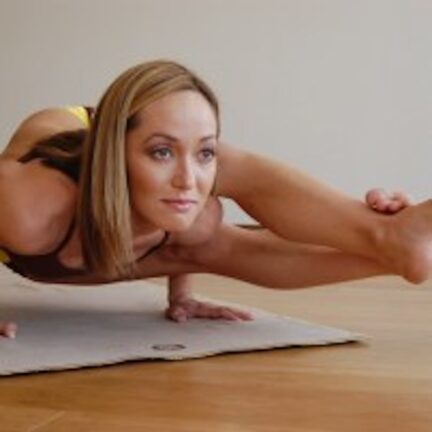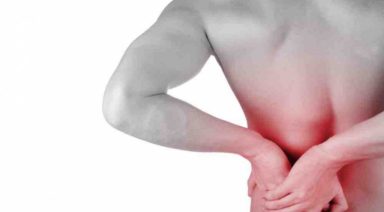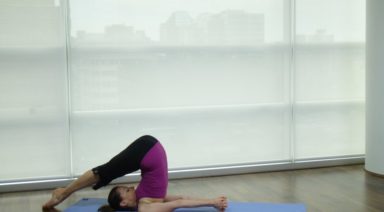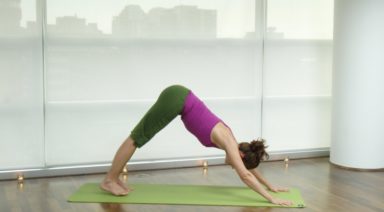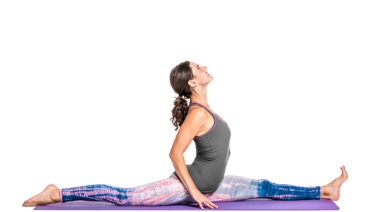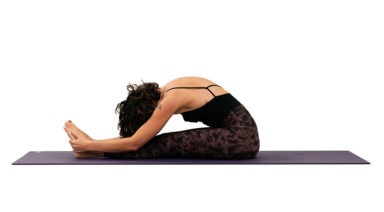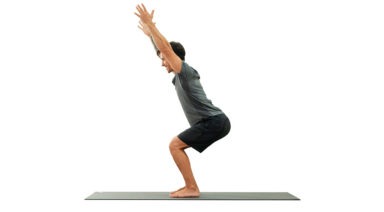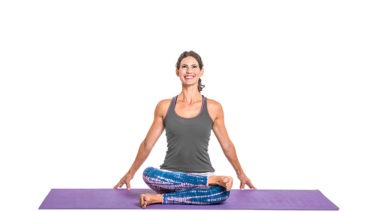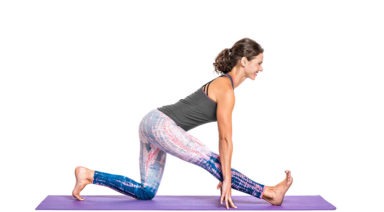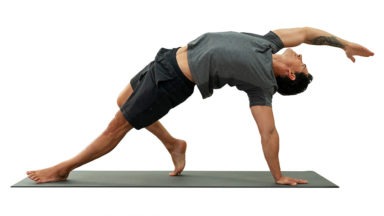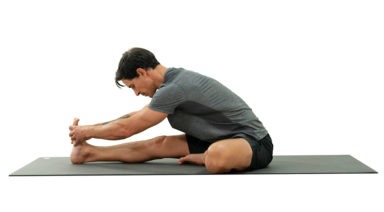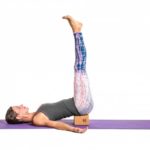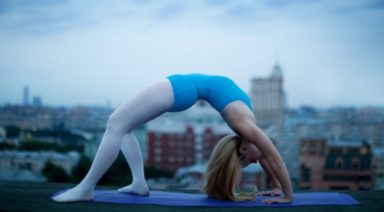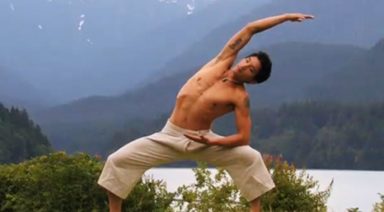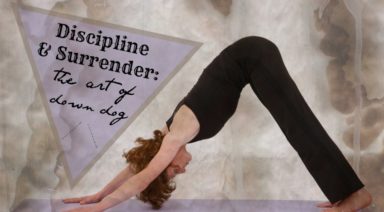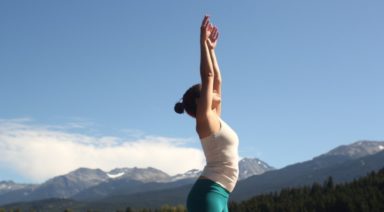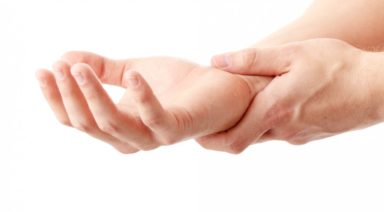Open Your Pelvis: Deep Straddle, Front Splits in Yoga
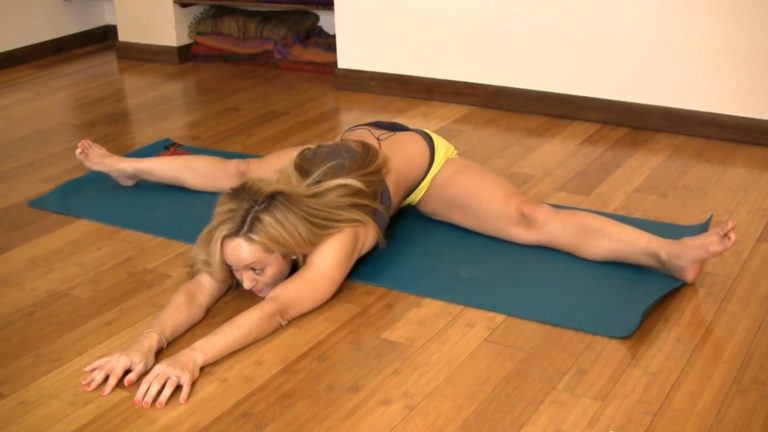
I grew up in the 1980s in the U.S.A. and one of my first fitness memories was of the “Thigh Master”. This invention was sold as toning the thighs and giving a sleek looking leg to the user. The exercise had the result of tightening the inner thigh muscles. Without much technical instruction the do-it-yourself home workout junkie would just squeeze the inner thighs muscles, including the Adductors, Gracilis and Pectineus. When I started practicing yoga the one area of serious tightness that I found on my body was my inner thighs. When your inner thighs are tight and over worked it can restrict healthy inward and outward rotation of the hip joint. In the yoga practice we rely on a healthy range of motion in the hip joint to practice most of the postures. Yoga practitioners who find their inner thighs a little tight need to take the time to understand how to soften and release this tender area in order to practice safely.
The thighs form the gateway to the pelvis and opening the muscles along the thighs takes patience, humility and good alignment. Between the hamstrings, the quadriceps and the inner thigh muscles, the upper legs create a solid protection for the pelvis. In yoga you practice how to let go of all unnecessary protection so that the body can relax. In essence flexibility is about laying down the armor of the body so its natural state of peace and harmony can be revealed. That’s easier said than done.
When I first started attempting to deepen my front splits I realized that my inner thighs were blocking the pathway. This is a sensitive area to work with in the body that cannot be rushed. In the Ashtanga Yoga Primary Series many students who are eager to open their inner thighs in postures like Upavistha and Supta Konasana end up creating injury out of their enthusiasm. As a teacher I strongly encourage students not to push themselves too hard while in these postures. Eager students will sometimes grab hold of their feet and attempt to force their torso down to the floor between their thighs. But without waiting for the body to relax and release its protection, the tightness around the thighs cannot release and they only end up making their body tighter. In the worst-case scenario that I have witnessed, a student injures their hamstring or inner thigh attachment around the sitting bones while attempting to go deeper. This can all be avoided if you work patiently, surrender the go and apply healthy alignment principles while working the yoga postures.
In the yoga practice, we cannot control when the body will release and open. All we can do is show up each day and practice while letting go of the need to get any particular result. The openings and transformations that happen through yoga practice occur because we surrender ourselves to the divine and in that grace we experience our natural freedom. There is no way to rush that process. But I know first hand how frustrating it can be to turn up every day on your mat and not feel like there is any improvement. When I work with front splits I get impatient and want to hurry along the tedious journey of softening an area of tightness. If you are also working on front splits this video will help you find a safe path to opening the inner thighs.
Passive Stretch to Open the Hips

Open hips are a kind of holy grail in the world of yoga. If your hips are tight some of the most basic movement in yoga will be an eternal challenge. Lotus and half lotus posture is almost taken for granted in traditional yoga practices. Not every student of yoga has naturally open hips.
Those that are born tight suffer and strive to open their hips. If you rush the process of opening the hips the weaker joints nearby, most often the knees, take the brunt of the pressure and can often end of up injured.
While it’s easy to push hard and over-exert yourself in any activity it’s harder to find the perfect balance between activation and release that will create health and healing in the body. If you have tight hips and you want them to open your mission is not to open your hips but to find that healing balance.
If you practice a traditionally active style of yoga like Ashtanga Yoga and your hips are tight then it can be very useful to supplement your daily practice with some additional passive stretching. There are many stretches that can help target your hips, but this one will prepare your body especially well for lotus and half lotus position.
Called double pigeon, you want to go into this movement with a relaxed, almost meditative mind. Do not seek to strive or force anything. Bend both knees about half way and stack the right leg on top of the left so that the right foot is on top of the left knee and the left foot is underneath the right knee. If it’s uncomfortable to sit here then just stay in position.
If you are comfortable fold forward and relax all unnecessary effort. Breath freely and effortlessly. Surrender your body into the floor and place your mind on the inner body. See if you can feel the external rotation of your hip joints. Place your mind deep within the pelvis and be sure not to fight or struggle with yourself. Just be exactly where you are. Hold the first side for between one and give minutes. Then switch sides.
Adding a passive stretch like this to your daily yoga practice can help relax the mind and body and balance what may be a sometimes overly aggressive attempt to force the body to open. If you do try this posture the calm, meditative mind is perhaps the most beneficial aspect of the movement.

